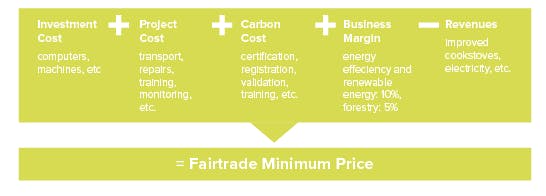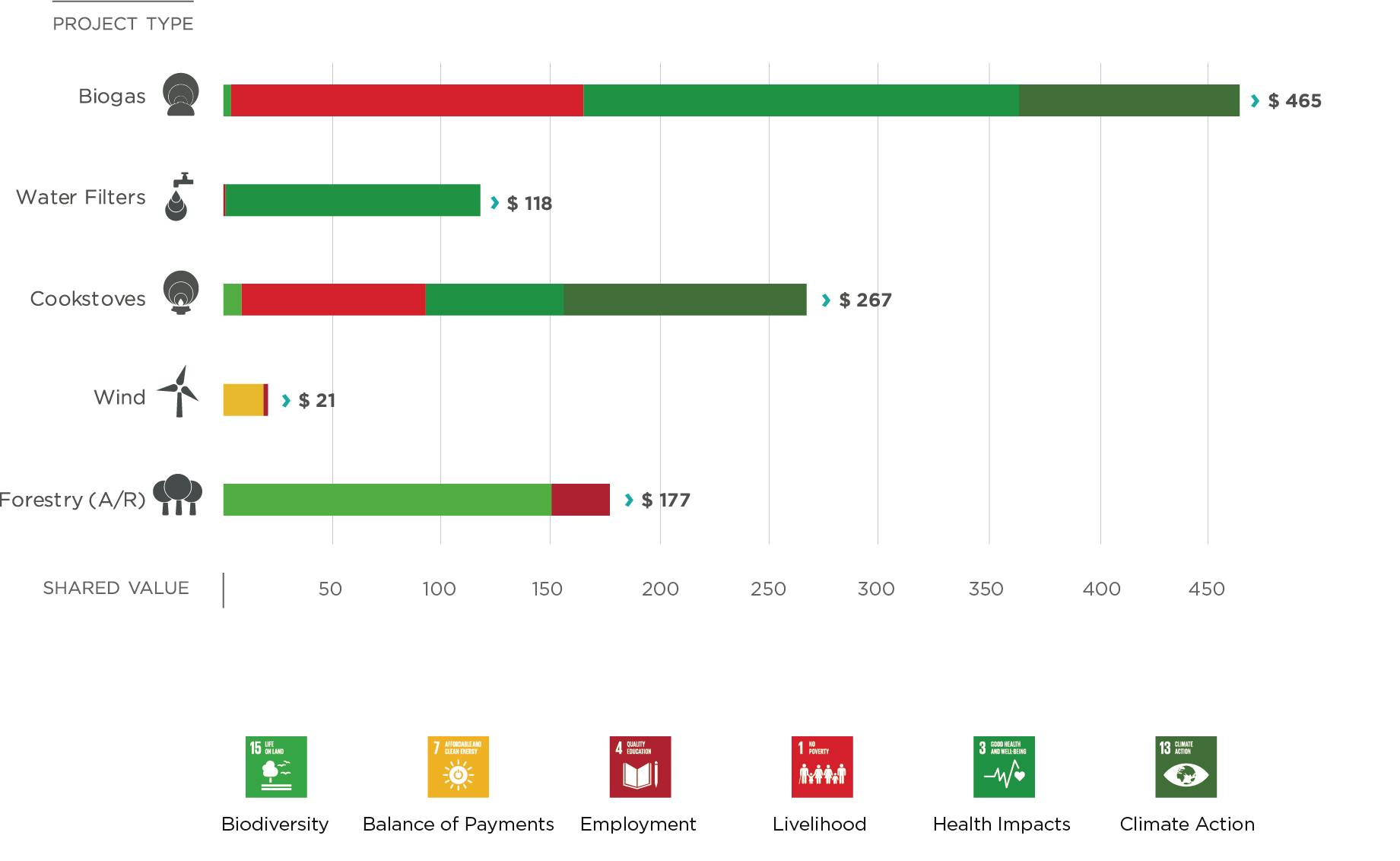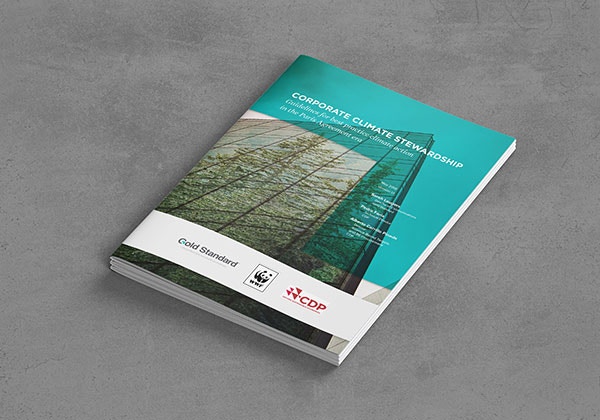opinion
What is a carbon credit worth?
Carbon Pricing series - Purchasing high quality carbon credits is an effective way to contribute the transition to a low-carbon, climate secure world.

Purchasing high quality carbon credits is an effective way to contribute the transition to a low-carbon, climate secure world. However it can seem complex – especially answering what seems to be a simple question, "How much should I pay for a carbon credit?" Why is one carbon credit more expensive than another? Doesn't every carbon credit represent one tonne of carbon dioxide prevented from entering the atmosphere? We hope to provide some clarity in how carbon credits are valued, taking into account significant differences among the projects that issue them.
First, let’s define value. The Natural Capital Protocol provides a good basis for its different aspects:
- Value (noun): The importance, worth, or usefulness of something.
- Market value: The amount for which something can be bought or sold in a given market.
- Price: The amount of money expected, required, or given in payment for something (normally requiring the presence of a market).
- Economic value: The importance, worth, or usefulness of something to people – including all relevant market and non-market values. In more technical terms, the sum of individual preferences for a given level of provision of that good or service. Economic values are usually expressed in terms of marginal/incremental changes in the supply of a good or service, using money as the metric (e.g., $/unit).
As environmental markets like the voluntary carbon market mature, they can grow to account for a number of different approaches to pricing their assets, including carbon credits.
Pricing based on market dynamics
The voluntary carbon market today is primarily driven by supply and demand, regardless of the implications to the project in terms of long-term viability.
Markets can be very effective for driving competition and reducing the cost of accomplishing an objective. However, what if that objective is the security of our climate and providing access to basic human rights such as food, water, education and good health? Paying for carbon credits at prices below what it costs to maintain a project means that these projects may stop operating in the vulnerable communities they support. Further, neglecting to fully account for the real value they deliver in beyond-carbon development benefits can accelerate a race to the bottom, meaning that the highest quality projects might be the first to fail.
Gold Standard believes that organisations and individuals have an opportunity to consider longer-term environmental and social impacts of their investment decision and consider both the costs and true value of project outcomes.
Pricing based on project cost
A cost-based model takes into account the implementation costs of a project and is used to help ensure the on-going viability of projects. The Fairtrade minimum pricing model (Figure 1) is an example of how this works in practice. It calculates a minimum price that ensures the average costs of the projects will be covered, plus an additional "Fairtrade Premium" on top that goes directly to the local community to fund activities that help them adapt and become more resilient to an already changing climate.
Fairtrade minimum prices for eligible project types:
- Energy Efficiency – 8.20€/tCO2e + 1€ Fairtrade premium
- Renewable Energy – 8.10€/tCO2e + 1€ Fairtrade premium
- Forest Management– 13€/tCO2e + 1€ Fairtrade premium
A cost-based model is a step toward ensuring project sustainability, yet it does not specifically account for the additional value these projects deliver in sustainable development.
The formula below shows how to calculate the Fairtrade Minimum Price for Energy Efficiency, Renewable Energy and Afforestation/Reforestation projects
Figure 1 - Fairtrade minimum pricing model

Pricing based on value delivered
While all Gold Standard-certified projects play a critical role in our transition to a low-carbon economy, our projects also go far beyond carbon mitigation. Using a value-driven model to set a price for carbon credits can truly account for the full environmental, social and economic impacts of a specific project—that is, both in emissions reductions plus the additional development benefits that can transform lives.
The United States Environmental Protection Agency (EPA) released an updated report in 2015 to estimate the total cost of carbon to society. Figure 2 summarises these costs over time according to different risks and assumptions of climate science. This means that for every tonne of carbon dioxide we emit into the atmosphere, we sacrifice between $11 and $212 in environmental degradation and negative social impacts. In theory, these should be accounted for in the price of a carbon credit.
Source: Technical Support Document: Technical Update of the Social Cost of Carbon for Regulatory Impact Analysis Under Executive Order 12866 (May 2013, Revised July 2015)
Figure 2 - Social Cost of CO2 2015-2050* (in 2007 dollars per metric ton)

To take this a step further and shine a light on the value above and beyond carbon mitigation, Gold Standard commissioned economists to conduct a comprehensive valuation of the socio-economic benefits delivered by our projects. The conclusion was that projects that follow safeguards, engage local stakeholders and provide development benefits beyond climate create shared value worth billions of (US equivalent) dollars. The economic value of Gold Standard project impacts per tonne of CO2 can be seen in Figure 3.
Prices in the voluntary carbon market do reflect some of these “economic value” principles. For example, prices for community-based clean cookstoves projects, which often deliver life-saving health benefits to women and children, are generally higher than, for example, large-scale renewable energy projects. But they ultimately yield to the forces of supply and demand, without safeguards such as a minimum price. This is why there is a big gap between the average historical prices for carbon credits compared to the economic value of impacts they deliver as noted in Figure 3.
Gold Standard’s holistic standard, Gold Standard for the Global Goals, aims to address this discrepancy by more rigorously quantifying the beyond-carbon benefits in a consistent and comparable way. But in the meantime, we advocate for buyers of carbon credits to more fully recognize the full picture of value creation made possible by these projects.
Per tonne of reduced CO2 emissions
Figure 3 - Monetary value of Gold Standard project impacts

Innovative approaches among companies: Internal carbon prices and carbon fees
There is growing awareness among the private sector on the true value of natural capital, like a stable climate and thriving ecosystems, and progress in social measures like improved health and gender equality. Specific to climate, Swiss retailer Coop sets their internal price on carbon at CHF 150 (roughly USD $150) to drive innovation and investment in Gold Standard-certified emissions reduction activities that also support communities within their supply chains. Microsoft requires their internal departments to include a budget line item reflecting the cost of their carbon emissions, which then translates to a carbon fee that they contribute to a carbon investment fund, creating new capital for sustainability initiatives. These include internal emissions reductions efforts in addition to supporting projects outside their operations through carbon credit purchases.
Recommendations
In conclusion, deciding on what project to invest in and how much it’s worth remains a bit like navigating the real estate market. There are a number of different considerations ranging from quality, type, size, and geographical location. While ‘value’ can remain somewhat subjective depending on your organisation’s ideals, objectives and requirements and is subject to the forces of supply and demand, Gold Standard advocates for prices of carbon credit to more closely mirror the true social cost of carbon and the economic value provided in additional impacts, while using the power of markets to help deliver this in the most cost-effective manner.

